How to Meal Plan on a Budget (step-by-step walkthrough)
To kick off my series on Eating Well on a Budget, I’m going to start off by showing you how to meal plan on a budget. The easiest way to do that is to show you as I do our meal planning for the week! I’ve been feeding a family of 4 (2 adults and 2 currently 15- and 12-year-old boys) on an average budget of $100 per week for about 4 years now.
At first, it was a struggle and required a lot of work, but after a few months it became much easier and now I would venture to say it’s second nature. Don’t feel like you have to incorporate every money-saving tip all at once. Add in one at a time. Every little bit helps, and taking it on all at once can be overwhelming.
There are a few clarifications I should give on this:
- This does not include non-food household items (toilet paper, aluminum foil, hygiene products, etc) – we have a separate budget for those.
- This does not include our boys’ school lunches. That comes out of a separate budget. During the first couple of summers, we stuck to the $100 per week budget during the summer without much trouble, but in the last couple of years we’ve had a teenage boy so…we upped it to $125 per week. 🙂
- Some of the things that help make this budget easier require a bit of advance planning (canning and freezing food in the summer, for example). At first, I only dabbled in these (and still stayed within budget – it just took more work to do so). I have a decent routine for these now and hope to add more (garden, here we come!) in the future. When you first start, it’s unlikely you will have these benefits right off the bat, so keep that in mind. It’s a little easier for me now for these reasons, but throughout the course of the next few weeks I’m going to teach you how to do all of the things I do to save money on food. Yes, we’re going to talk about canning!
Previously, I did a post on how to meal plan (including a free printable template!). That is an excellent supplement to this article – in fact, you may want to start there, read through step 2, then come back here and continue on. This post will be a much more in-depth look at using your budget as a jumping point, as is mentioned in that article.
So here we go! Follow along with my budget-conscious meal planning process this week:
Know your budget
You can’t very well eat on a budget if you don’t know what your budget is! Decide how much you’re going to spend. For us, I tend to alternate between “stock-up weeks” where I go to Winco and buy regular groceries as well as bulk dry goods to top off our supplies, and “top-off weeks” where I fill in the gaps with produce/meat/whatever else we need. Winco is the cheapest option in our area, but it’s a bit farther away from us than some other stores, so my top-off weeks are sometimes done at a closer store like Fred Meyer. I spend more on stock-up weeks (typically about $120-125) and less on top-off weeks (about $75-80).
This particular week is a top-off week, so this week’s budget will be $85.
Look for food distribution programs in your area.
I’m not referring to food banks or need-based programs (though please seek out those valuable resources if you need them), but rather food waste prevention programs. In my area, for example, there is a large warehouse where loads of nearly-expired food and produce collects every week. From there, people deliver it to different food distribution locations around the area. These programs are a win-win-win. Grocery stores have a place to send food they can no longer sell, landfills avoid thousands of pounds of food waste, and we get the benefit of free nutritious food! Search for food waste prevention programs online to see what might be available in your area.
Since this food source is not predictable (some weeks there is a lot, and other weeks, nothing at all), I do my meal planning after I go, so I know what I will have. Here is this week’s food distribution haul – totally free!
There was quite a bit available this week, so this will help my grocery budget a lot! Keep in mind though, this food is nearly expired, so you’ll want to plan to use it soon. Don’t dilly dally with this stuff – it’s on its way out!
Shop Your Cupboards/Pantry/Fridge/Freezer
One of the greatest contributors to high grocery bills is buying duplicates of things we already have, then trashing wasted extras. You’ll notice that a lot of money-saving tips are also food waste-prevention tips because, well, food wasted = dollars wasted.
Do a quick skim of your fridge, produce, cupboards, and freezer before even starting your meal plan. Take special note of the things that need to be used up soon, particularly meat and produce. Here’s my list for this week (not counting my food distribution goodies):
Need to use up:
- cilantro
- avocado
- apples
- cauliflower
- spinach
- fall harvest muffins (leftover)
- chicken breasts (4)
- mushrooms
Available:
- dried grains: pasta, rice, quinoa, oats
- baking stuff (flour, sugar, etc)
- dried chili beans
- clementine oranges
- yogurt
- trail mix
- whole grain crackers
- mozzarella cheese sticks
- lots of canned goods
- cheddar cheese
- lunch meat
- eggs
- 2 gallons milk (we go through 4 per week usually!)
- fresh-pressed apple cider (YUM)
I don’t usually write them all out like this, but for the sake of walking you through the process that happens in my head, here it is. Be aware that since this is a top-off week, I have more available than I will on stock-up weeks.
Check for sales and coupons
I’ve provided a lot more detail about this step here, (definitely check it out if you wanted to get started with strategic couponing). Either find a store that puts out a weekly ad, or a store that has killer prices all around (yay Winco!). If there’s a weekly ad, check for the best sales, especially on meat and produce, and make a list of those. What’s on sale and healthful is what you’re making! Use any coupons you have to create more good deals.
Take stock and decide what to make
Look at the list of what you’ve got available and what’s a great deal at the store. What can you make with these? If you’re struggling to come up with ideas, use a search-by-ingredient database to help you find recipes.
This week, we have several Mexican-type ingredients (tomatoes, cilantro, avocado, green pepper, onions) so I think I’ll make an enchilada quinoa casserole with those. My kids have been requesting mac and cheese (I have a recipe that uses an entire head of cauliflower and a butternut squash in the sauce!) so I’ll put that in there too. My husband loves Vietnamese steak sandwiches that use the cucumber I got from the food distribution, so I’ll include those. I’ll round out the week of dinners with pork chops and chicken parmesan.
Make your shopping list
Go through your planned meals and add to your shopping list anything that you don’t already have and need to buy. I like to divide mine roughly by sections of the grocery store just to save time wandering. Include a rounded-up price estimate next to each item.
For us, lunches are typically dinner leftovers, and/or salad with canned chicken, so I’ll put salad and chicken on the list. I usually make sure we have two different types of breakfast options besides eggs, and oatmeal. This week, I have the bagels from food distribution and my fall harvest veggie muffins, so I’ll just make sure to pick up another type of breakfast protein to pair with those. We have quite a few fruits, veggies, and snacks already, and plenty of smoothie ingredients. I also typically plan to have dessert once or twice a week, so I’ll toss in some ice cream as well. Here’s my completed list:
Click here for a copy of this shopping list/meal planning template. And to answer your question, no…my grocery list is never this neat. I used my best penmanship and avoided using too much of my made-up shorthand for your sake. You’re welcome. 🙂 Also, if you’re wondering what “scrounge” and “whatever” are all about – they can seriously help decrease your food costs and waste! Click here to read more about those.
Quickly tally your estimated prices to make sure you’ll be within your budget. If not, drop off unnecessary ingredients (garnishes, extra snacks/desserts, etc) until your estimate is within your budget. You’ll notice that there are a few ingredients on my list that are not particularly “low cost” items, like flank steak, Dave’s Killer Bread, and vermouth for my pork chop recipe. Regardless, we want to eat these and my estimate is still at budget. If I cut those or swapped them for cheaper alternatives, I could bring the cost down even further!
Shop!
Take your budget-conscious shopping list to the store and get the goods! If my estimate is very close to my budget, I like to keep a quick, rounded-up tally on the calculator on my phone as I put items in my cart to avoid overspending. If I have a bit of a buffer, I don’t bother with this. You’ll notice that I underestimated the costs of some things (hello, $13 PER POUND flank steak! Sheesh!), but rounding up on my estimates usually gives me some wiggle room.
So here’s my haul and the receipt for it – I spent $81.06 on all of my “top-off” items.
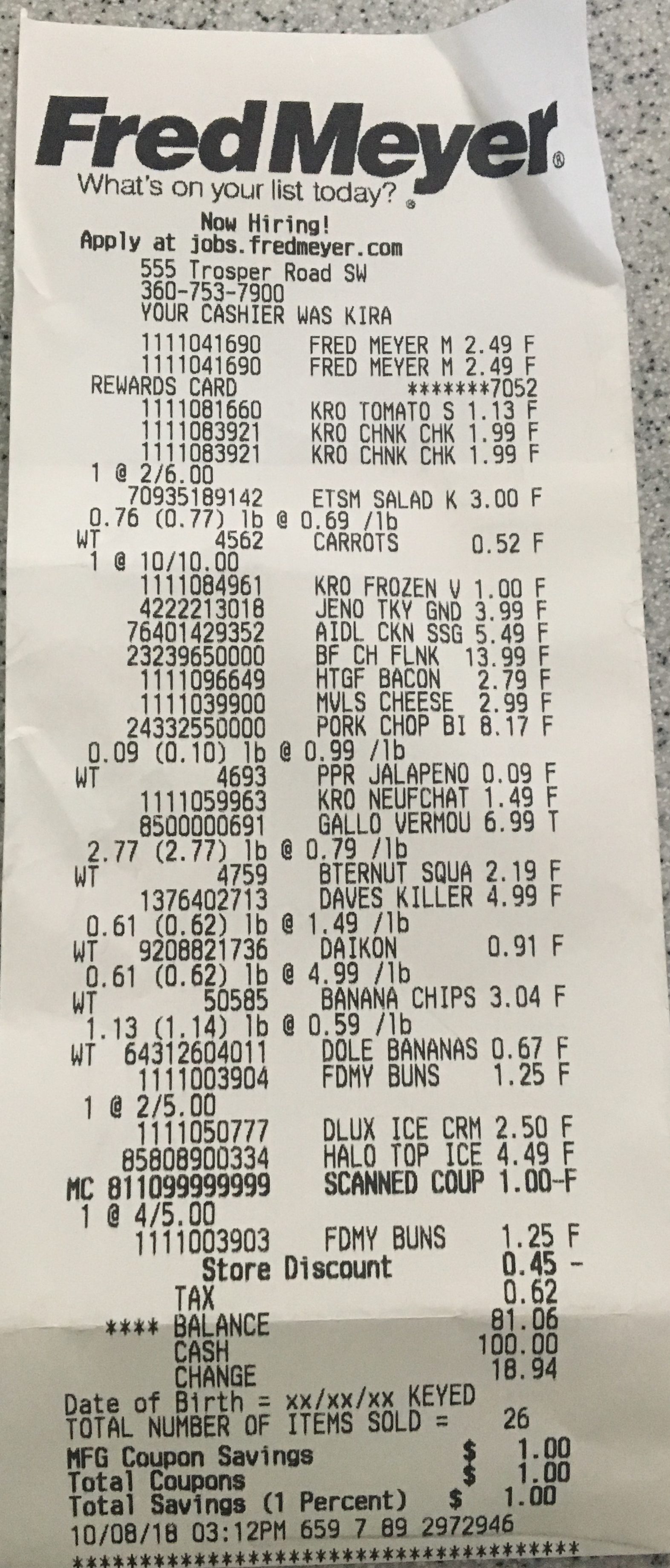
Combined with (most of) the ingredients I had from food distribution and my pantry/refrigerator, here’s a look at our food for the entire week.
Even if it seems overwhelming at first, this process gets easier with more practice. Now it only takes me 10-15 minutes to make my meal plan and stay in budget. Plus, we eat healthful, tasty food – all for an average of $100 per week!
Thanks for reading! Stay tuned for more tips on eating well on a budget – I have a lot of exciting posts planned to share with you! I walk you through a stock-up week in this post, so click there to see what my other weeks look like. Comment below with your favorite ways to keep grocery costs down!
You Might Also Like
Food Prep: Streamline your healthy life in just 20 minutes per week
Ready to Get Healthy? 5 Simple Steps to Set Yourself up for Success
How to Meal Plan to Save Time and Money (with FREE printable meal planning template)

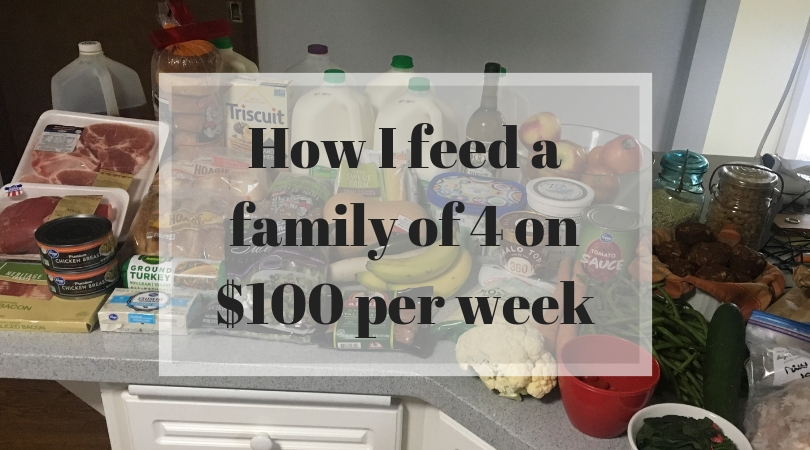
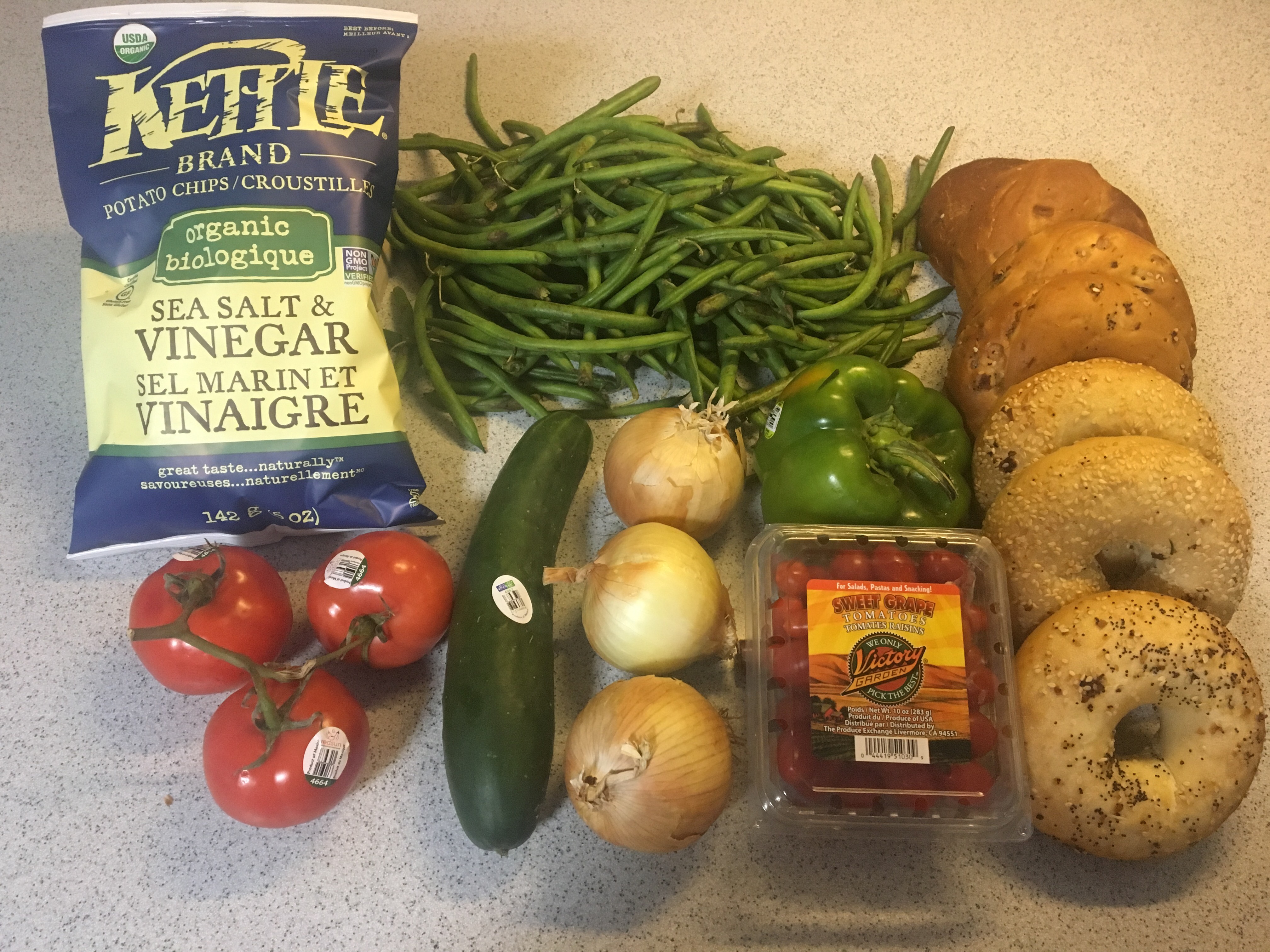
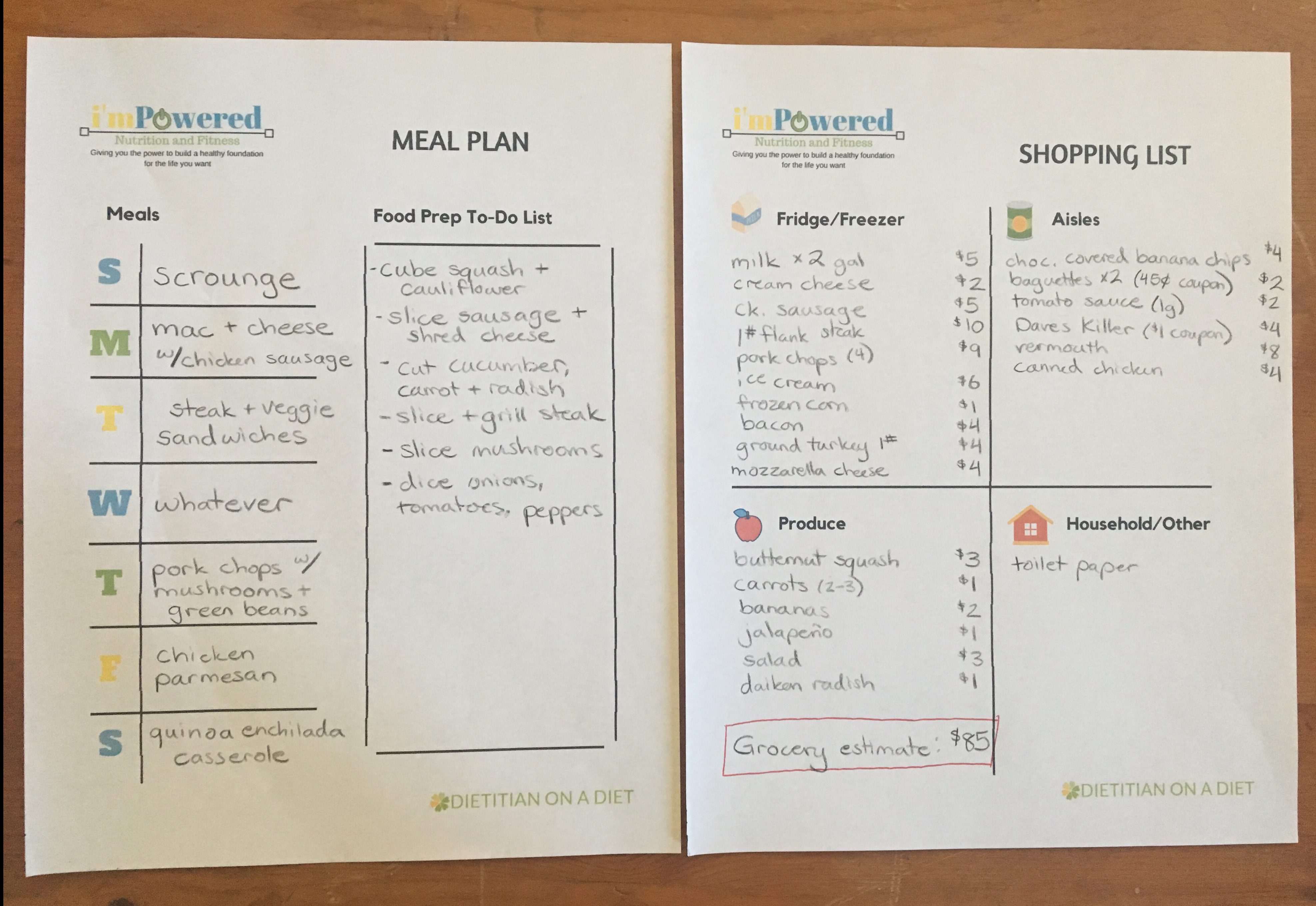
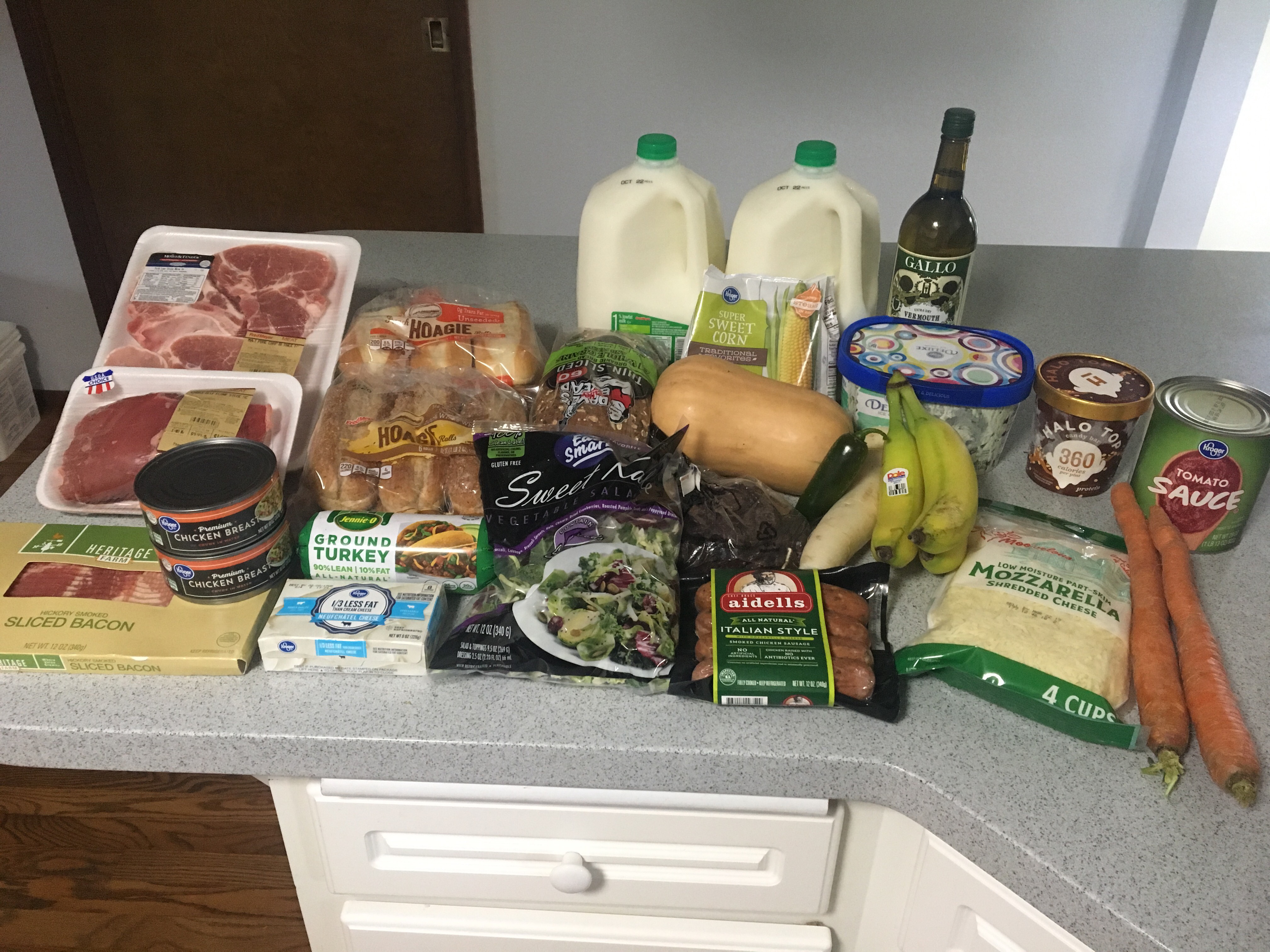
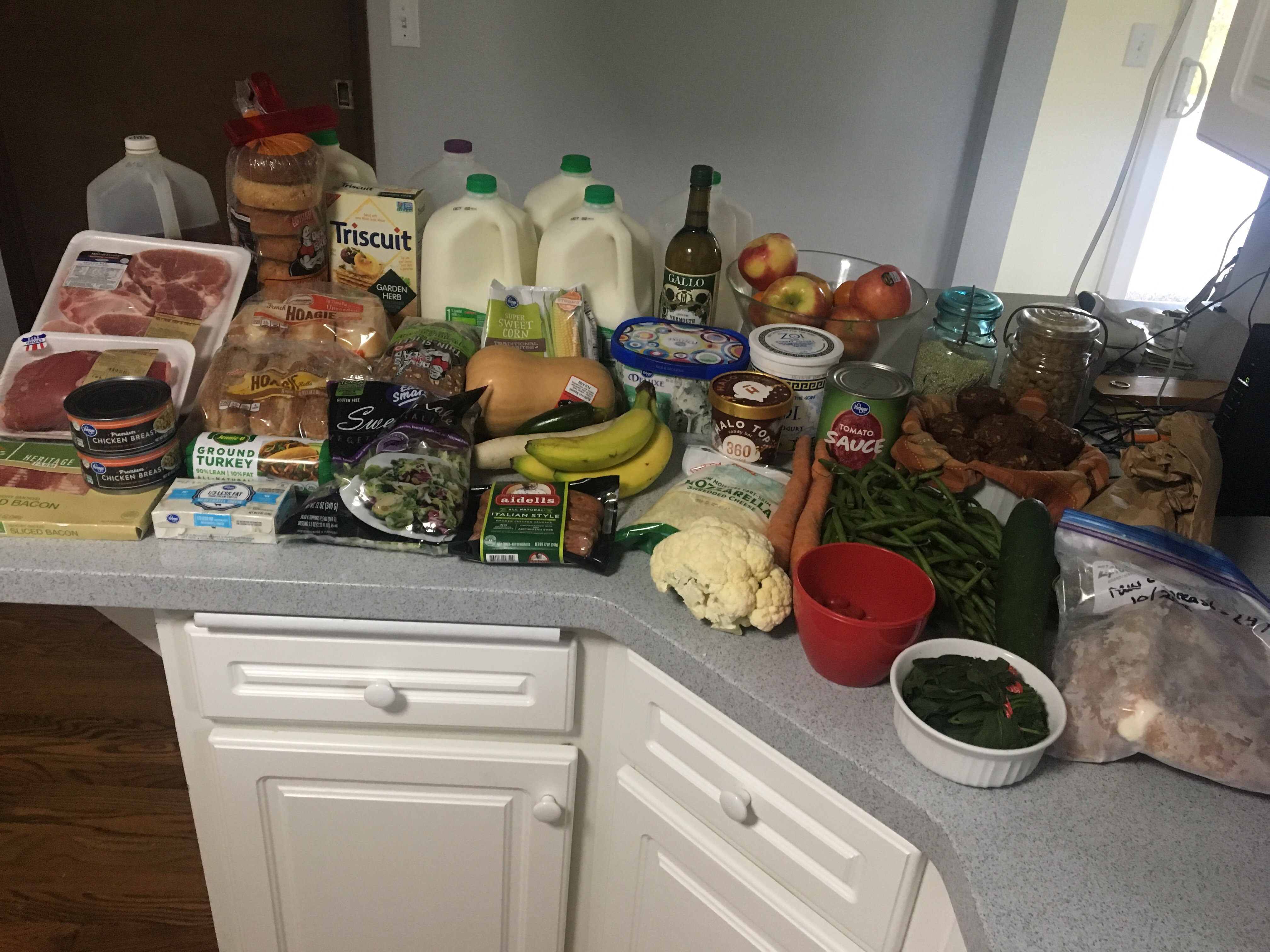



Leave a Comment